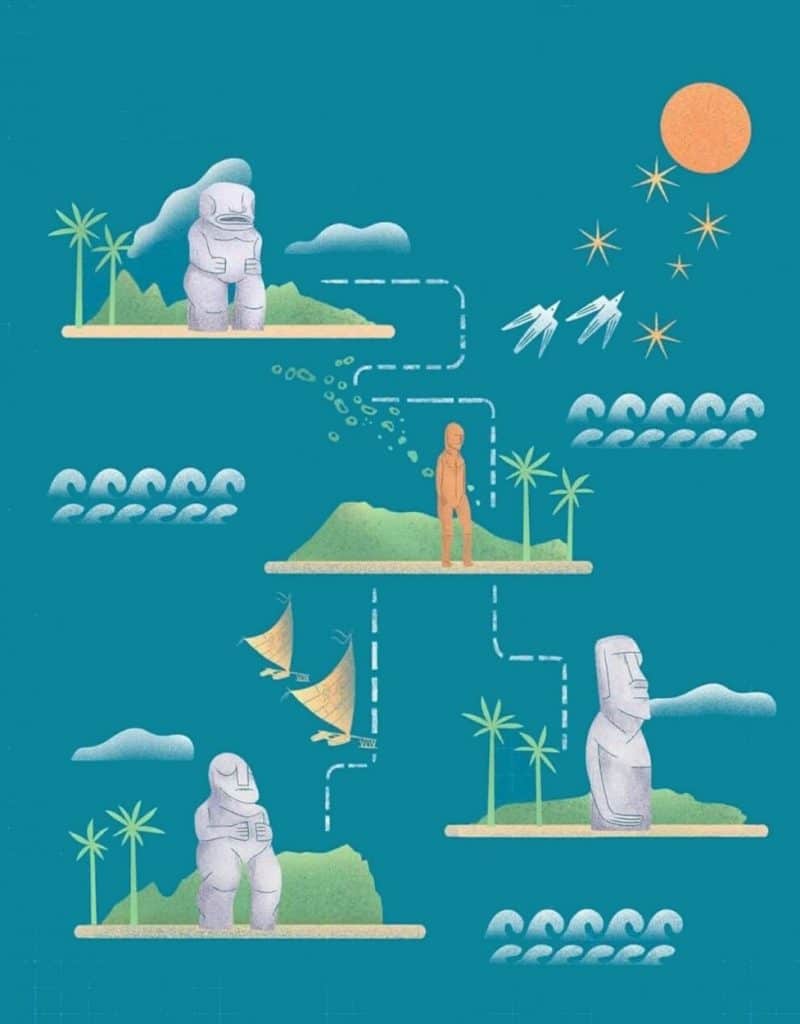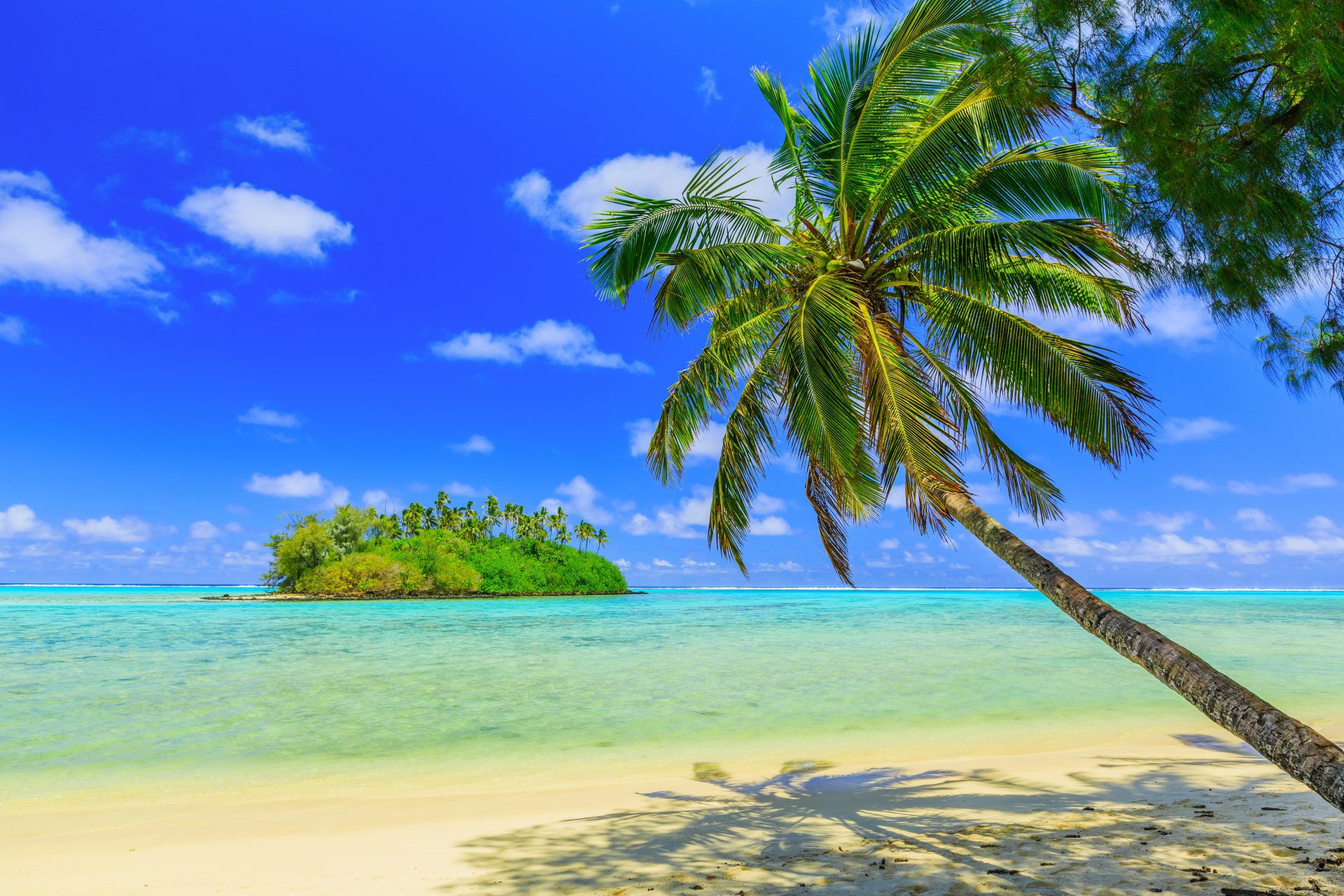What do you do if you have limited historical data and a lot of questions awaiting answers? You turn to genetic research.
This is what researchers did when trying to reconstruct the routes of ancient Polynesians, who left behind little archaeological evidence but a tiny yet powerful indicator: a genetic trail. Scientists have used DNA analysis to recreate their heroic voyages through time and space, spanning over 500 years and more than 5,000 kilometres of treacherous waters of the Pacific Ocean.
The settlement of Polynesia is one of the most remarkable achievements in the history of human migration and navigation, yet, little is known as to when the colonisation of the islands took place and which order it followed.
The expansion was done astonishingly fast, outrunning the evolving dialects or cultural practices that would usually serve as anthropological markers. But a new paper published in Nature by computational biologist Alexander Ioannidis of Stanford University and 26 other researchers claims to have answers.
The scientists have identified and analysed DNA segments from 430 present-day inhabitants of 21 Pacific islands. Comparing the genes between individuals of exclusively Polynesian origin led to recreating settlements paths across the Pacific islands and the order in which they took place. The dates for each of the settlements were obtained by calculating the number of generations between which mutations occurred as genetic variants were lost. As the researchers put it, “our reconstruction of the branching Polynesian migration sequence reveals a serial founder expansion, characterized by directional loss of variants”.
The origins of Polynesians can be traced to Taiwan from where, circa 2500 BC, their voyage initiated spreading from the Philippines and Indonesia to other pacific islands. It is however in the western Pacific, on the island of Samoa, that their extraordinary journey begins, venturing into the vast desert of the ocean. DNA analysis indicates that the expansion from Samoa unfolded westward to Fiji, Tonga located in the south, and then east to Rarotonga around the year AD 830. In AD 1050, the descendants of Rarotongas travelled to settle present-day Tahiti, and then the Tuamotu archipelago, a 1,500km-long series of tiny atolls, only 50 years later.
A true odyssey that culminated with a Homeric 2,600 kilometres voyage from Mangareva to Easter Island (Rapa Nui), the world’s furthest land refuge, which could have occurred by AD 1210. A tremendous exploit given the size of the isle, which is only three times the size of Manhattan, hence, a target that could be easily missed.

Unlike the Vikings, who set off for the exploration of the New Land (likely the first European-American contact), the ancient Polynesians who reached the Society Islands around the same dates were fighting against much greater odds: the vastness of the Pacific Ocean, the tiny size of the islands, and the uncompromising adversary winds and oceanic currents (the colonisation occurred in the opposite direction of the Pacific flow).
Their navigational prowess is undeniable. They observed the capricious nature—birds, volcanic clouds, and wind—to navigate the double-hulled canoes through thousands of kilometres of open water. It is thought that family groups of 30-200 individuals set sail with the aim of finding new land as the population was rapidly expanding and the resources were declining.
It is accepted that the first arrivals experienced rapid initial growth, fuelled by the untapped resources of abundant reefs, seabird colonies and flightless birds (that soon after became extinct). New daring explorations were undertaken as the island populations were growing, following the same pattern—the never-ending search for further unexploited resources. Was this a race without return? The study suggests that there was little connection between the newly settled islands and the motherlands. It could be perceived as inconsistent with earlier linguistic studies that highlighted the importance of inter-island interaction, as expressed by Patrick Kirch, an anthropologist at the University of Hawaii.
Despite these remaining uncertainties, it is clear that the colonisation of Polynesia was an expansion without precedent that allowed cultural expression to spread. Similar customs, designs and symbols can be observed throughout the Pacific islands, of which Easter Island’s iconic colossal stone statues, or Moai, are the most prominent example.
The Marquesas Islands, Mangareva and Raivavae, are home to likewise stoic monolithic figures- less important in size yet as alien and puzzling. Standing silently, they are a testament to the people who erected them and seem to confirm researchers in the beliefs that behind the powerful figures was a common ancestor. Today the DNA findings disclose to us the full chronology of how, and when.





